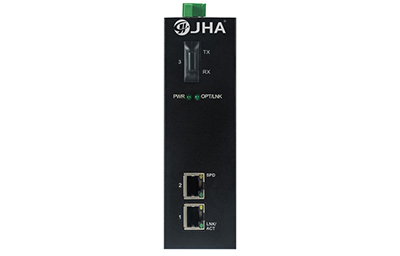There are many different classifications of industrial-grade fiber media converters. In practice, most attention is focused on the categories distinguished by different optical connectors: SC-type industrial-grade fiber media converters and FC/ST-type industrial-grade fiber media converters.
When industrial-grade optical fiber media converters are connected to different devices, they need to be aware that they are using different interfaces.
1. Connect the transceiver to the 100BASE-TX device (switch, hub):
Ensure that the length of the twisted pair cable does not exceed 100 meters;
Connect one end of the twisted pair to the RJ-45 port (uplink port) of the industrial transceiver, and the other end to the RJ-45 port (public port) of the 100BASE-TX device (switch, hub).
2. Connection of industrial fiber media converter to 100BASE-TX equipment (network card):
Ensure that the length of the twisted pair cable does not exceed 100 meters;
Connect one end of the twisted pair to its RJ-45 port (100BASE-TX port), and the other end to the RJ-45 port of the network card.
3. The connection between industrial-grade fiber media converter and 100BASE-FX:
Ensure that the length of the optical fiber does not exceed the distance provided by the device;
One end of the optical fiber is connected to the SC/FC/ST connector of the industrial-grade optical fiber transceiver, and the other end is connected to the SC/ST connector of the 100BASE-FX device.
It should also be reminded that when using industrial-grade fiber media converters, many users think that as long as the length of the fiber is within the maximum distance that single-mode fiber or multi-mode fiber can support, it can be used normally. In fact, this is a wrong understanding, and this understanding is correct only when the connected device is a full-duplex device. When there is a half-duplex device, the transmission distance of the optical fiber is limited.
Post time: Aug-05-2020






